
We’ve been publishing our guides to the best movies and TV shows on Netflix for three years now, and the selections keep improving. More than half of the movies in our 2014 edition are new from last year, and they pull from a variety of styles—romantic comedies, action flicks, indie dramas, blockbuster sci-fi, documentaries, animated films and more. And if you already know what kind of movie you’re in the mood for, check out our genre-specific guides, as well:
The 50 Best Comedy Movies on Netflix Streaming
The 40 Best Romantic Movies on Netflix Streaming
The 30 Best Action Movies on Netflix Streaming
The 25 Best Horror Movies on Netflix Streaming
The 25 Best Kids Movies on Netflix Streaming
The 40 Best Romantic Movies on Netflix Streaming
The 30 Best Action Movies on Netflix Streaming
The 25 Best Horror Movies on Netflix Streaming
The 25 Best Kids Movies on Netflix Streaming
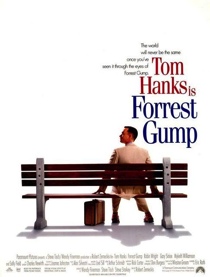 101. Forrest Gump
101. Forrest GumpYear: 1994
Director: Robert Zemeckis
Few films infiltrate the collective American psyche quite the way Forrest Gump managed. You’ve undoubtedly heard someone make reference to this 1994 classic—whether it was a classmate sarcastically yelling “Run, Forrest, run!” as you hustled to catch the bus, or someone busting out their best drawl to deliver, “Momma always said life is like a box of chocolates.” The entire film is full of dialogue that’s both moving and funny (my personal favorites include “But Lt. Dan, you ain’t got no legs” and “I’m sorry I had a fight at your Black Panther party”). Forrest may be a simple man, but his story is our nation’s story, and we all are run through the emotional gauntlet as we watch him hang with Elvis and John Lennon, fight in Vietnam and encounter many a civic protest—all while in pursuit of his true love, Jenny. Tom Hanks delivers an Oscar-winning performance, and Gary Sinise is heartbreaking as Lt. Dan.—Bonnie Stiernberg
 100. Let the Fire Burn
100. Let the Fire BurnYear: 2013
Director: Jason Osder
On May 13, 1985, a deadly altercation broke out in Philadelphia between police and a radical organization called MOVE, resulting in 11 deaths and the destruction of several city blocks. First-time filmmaker Jason Osder’s riveting documentary brilliantly re-creates that day entirely through live local broadcasts and a televised city hearing months later that investigated who was at fault. Let the Fire Burn is a found-footage landmark that presents a troubling commentary on race relations in America that remain distressingly unresolved. Perhaps even more impressively, though, Osder’s film doubles as a moving, engrossing courtroom thriller populated with unexpected heroes and fascinating, nuanced insights into how human beings behave in a crisis.—Tim Grierson
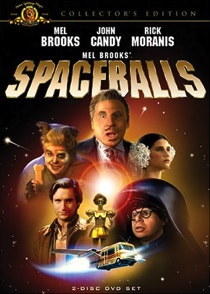 99. Spaceballs
99. SpaceballsYear: 1987
Director: Mel Brooks
Originally perceived as one of writer/director Mel Brooks’ lesser works, this loving send-up of the sci-fi/fantasy genre (specifically, Star Wars) has, over the years, wormed its way into the hearts of a new generation of fans who caught it on video. “May the Schwartz be with you,” “Ludicrous Speed,” “Mawg”—if these are all terms that mean nothing to you then it’s high-time you checked this movie out and see what all the fuss is about.—Mark Rozeman
 98. Safety Not Guaranteed
98. Safety Not GuaranteedYear: 2012
Director: Colin Trevorrow
At the last few Sundance Film Festivals, a running joke has developed about the ubiquity of Mark Duplass. It seems like if he’s not writing and directing an independent film with his brother Jay (Cyrus, Jeff, Who Lives at Home), he’s producing and/or starring in another. But while indie film fans may feel like they’ve gotten a handle on Duplass’s hipster vibe, his performance in Safety Not Guaranteed shows that he can be mysterious as well as funny, brooding as well as charming.—Jeremy Matthews
 97. The Fisher King
97. The Fisher KingYear: 1991
Director: Terry Gilliam
Many of Robin Williams’ characters dangle perilously close to the edge of sanity, but Parry has been pushed right off that cliff in The Fisher King. Terry Gilliam’s Arthurian tale is set in the present, but it still takes a fantastical journey for Jeff Bridges’ disgraced talk-show host and Williams’ homeless widower to find The Holy Grail, sweet Lydia and redemption.—Josh Jackson
 96. M*A*S*H
96. M*A*S*HYear: 1970
Director: Robert Altman
Considering that it became the basis of a beloved (and long-running) CBS sitcom, it’s easy to forget how revolutionary the original M*A*S*H film was at the time of its release. Certainly, more than 40 years after it first scandalized moviegoers, this 1970 black comedy about the exploits of a Korean War-era surgical hospital not only stands as one of the most subversive portraits of war ever put to film but also as one of the flat-out, most hilarious movies ever made. Boasting a script consisting almost entirely of improv, a major comedic set piece centered on a suicide attempt and the first utterance of the word “fuck” in a mainstream film, M*A*S*H redefined the American comedy and promptly secured director Robert Altman’s status as the ultimate actor’s director.—Mark Rozeman
 95. Pirates of the Caribbean: The Curse of the Black Pearl
95. Pirates of the Caribbean: The Curse of the Black PearlYear: 2003
Director: Gore Verbinski
Daring to base the central character of a Disney franchise on a notorious junkie-alcoholic walking-corpse rock star like Rolling Stones guitarist Keith Richards was a coup, but even more mind-blowing was how well Depp’s crazy idea worked. Guzzling rum as he bobs and weaves—stumbles, really—through this film delivering hilariously slurred one-liners, he is the consummate goodhearted scoundrel, easily stealing every frame he flamboyantly swaggers across.—Steve LaBate
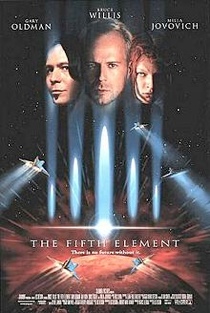 94. The Fifth Element
94. The Fifth ElementYear: 1997
Director: Luc Besson
The Fifth Element is the ultimate display of what would happen if someone with the sci-fi enthusiasm of a teenage boy wrote a big-budget Hollywood script, which is exactly the case here. Set in 23rd century New York City, taxi driver Korben Dallas (Bruce Willis) gets wrapped up in saving the world with his passenger Leeloo (Milla Jovovich), the fifth and final piece that is needed to protect earth. Entertaining, thrilling, and visually fantastical, The Fifth Element is worth every minute of your time.—Caitlin Colford
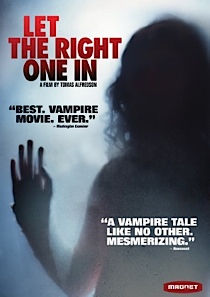 93. Let the Right One In
93. Let the Right One InYear: 2008
Director: Tomas Alfredson
Vampire stories are plastered all over American pop culture these days (True Blood, Twilight, The Vampire Diaries), but leave it to the Swedes to produce a vampire film that manages to be both sweet and frightening. The friendship between Oskar, a scrawny, 12-year-old outcast, and Eli, a centuries-old vampire frozen in the body of a child, is a chilling but beautiful story to behold.—Jeremy Medina
 92. Charade
92. CharadeYear: 1963
Director: Stanley Donen
Cary Grant is the most charming male lead ever. Audrey Hepburn is the most charming female lead ever. Everything else is just bonus in this romantic thriller about a woman pursued in Paris for her late husband’s stolen fortune: the Henry Mancini score, the Hitchcock-ian suspense, the plot twists and Walter Mathau as a CIA agent.—Michael Dunaway
 91. The Constant Gardener
91. The Constant GardenerYear: 2005
Director: Fernando Meirelles
In The Constant Gardener, diplomacy is overstepped by both those with corrupt intentions and those who see it as a bureaucratic divide to human charity. Combining the oft-convoluted storytelling of novelist John Le Carré and the violently dazzling visuals of Brazilian director Fernando Meirelles (City of God), its message is emboldened by the failure of its well-intentioned characters to intervene in the robbed lives of others.—Cameron Bird
 90. The Trip
90. The TripYear: 2011
Director: Michael Winterbottom
Two British actor/comedians playing versions of themselves travel the beautiful and bleak north England countryside, stopping to eat at various upscale restaurants, but mostly just talking. And talking and talking. And doing impressions of Michael Caine, Woody Allen, and Liam Neeson, as well as British personalities an American audience might not recognize. But mostly just talking, with overlapping affection and competition. Sound like a good idea for a film? It absolutely is.—Jonah Flicker
 89. Days of Being Wild
89. Days of Being WildYear: 1990
Director: Wong Kar Wai
It’s a crying shame that In the Mood for Love isn’t also available on Netflix, because it would certainly rank near the top of this list. But this film, described as an “informal prequel” is worthy enough on its own as well. It’s also got Maggie Chen and Tony Leung, but the star turn here is from Leslie Cheung as Yuddy, the Lothario leaving a trail of broken hearts in his wake. The tone is certainly more on the bitter end of bittersweet, but Wong Kar-wai’s directorial voice, of a man who believes in love, shines through loud and strong.—Michael Dunaway
 88. The English Patient
88. The English PatientYear: 1996
Director: Anthony Minghella
It wasn’t just Elaine Benes who thought that The English Patient was overrated and boring: Even at the time of its Oscar win, this period romantic epic was being criticized in some quarters for its self-consciously old-school sweep. To which its fans say, “Yeah, so?” A stellar “They don’t make ’em like this anymore” movie, filmmaker Anthony Minghella’s adaptation of Michael Ondaatje’s novel starred Ralph Fiennes and Kristin Scott Thomas as the most poignantly star-crossed big-screen lovers since Ilsa walked backed into Rick’s life. Beautifully shot, sensitively acted, romantically overpowering, The English Patient is way, way better than Sack Lunch.—Tim Grierson
 87. Short Term 12
87. Short Term 12Director: Destin Cretton
As it progresses, Short Term 12 remains rigorously structured in terms of plot; yet it never feels calculated. In fact, the film serves as a fine example of how invisible screenwriting can be. By allowing his characters’ irrational emotions to influence events and instigate key turning points, Cretton capably masks the film’s finely calibrated story mechanics. And while everything seemingly comes to a head during a key crisis, it’s only fitting that the story ends with a denouement that bookends its opening. Cretton’s clear-eyed film is far too honest to try and convince us that there’s been any sort of profound change for Grace or anyone else. Instead, it’s content to serve as a potent reminder that tentative first steps can be every bit as narratively compelling as great leaps of faith.—Curtis Woloschuk
 86. Barton Fink
86. Barton FinkYear: 1991
Director: Joel Coen
While hung up with the intricate plotting of Miller’s Crossing, The Coen Brothers took a break to write a script about a blocked screenwriter (Jon Turturro). Reminiscent of Stanley Kubrick and David Lynch at their most darkly satiric, Barton Fink depicts a self-important New York playwright who struggles to write a Hollywood wrestling picture while residing in a rotting hotel. A jaundiced metaphor for the compromised creative process of show business, Barton Fink delivers the deadpan comedy and quirky performances of the Coens’ trademark, including Oscar nominee Michael Lerner as a bombastic studio chief, John Mahoney as a boozing, Faulkner-esque novelist, and John Goodman as a cheerful salesman with a dark secret. Audiences can obsess over the meaning of lines like Goodman’s “I’ll show you the life of the mind!” but any answers the film holds are unlikely to be reassuring.—Curt Holman
 85. Say Anything…
85. Say Anything…Year: 1989
Director: Cameron Crowe
In his directorial debut, Cameron Crowe places one of the all-time charming film courtships within that strangely insular time, mid-transition, between high school and college (or career or family). In Lloyd Dobler, the defining role of John Cusack’s career, Crowe presents an appealing, convincing everyman whose pursuit of a girl (Ione Skye), supposedly out of his league, reveals how foolish such handicapping can be in the first place. Though Crowe would go on to create a number of career-launching roles for women (Renee Zellweger and Kate Hudson should thank him, daily), in Say Anything, Dobler rules.—Michael Burgin
 84. The Cabin in the Woods
84. The Cabin in the WoodsYear: 2011
Director: Drew Goddard
For a movie chock-full of twists, perhaps the biggest is that despite all appearances to the contrary, The Cabin in the Woods is a heartfelt love story. Mind you, not between any of the young and pretty college students who tempt fate at the cabin in question. No, this romance is between creators Joss Whedon and Drew Goddard, and the scary-movie genre as a whole. A ménage à terror, if you will. Like Scream before it, the film is a simultaneous dissection and celebration of all the tropes to which it pays homage, while also managing to be a superb example of the genre in its own right. The script is vintage Whedon—smart, funny and surprising. Thanks to Goddard’s direction and staging, and despite the film’s very focus on the formulaic nature of horror, it still manages to be tense, atmospheric and jump-out-of-your-seat scary. The Cabin in the Woodsmay very well be the ultimate schlocky little horror movie.—Dan Kaufman
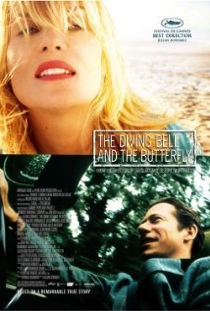 83. The Diving Bell and the Butterfly
83. The Diving Bell and the ButterflyYear: 2007
Director: Julian Schnabel
In 1995, French journalist Jean-Dominique Bauby suffered a horrific stroke that left his entire body paralyzed in what doctors call the “locked-in syndrome.” In a remarkable testament to the human spirit, Bauby was able to dictate a 132-page memoir by blinking his left eye. Incredibly, ace-auteur Julian Schnabel adapted that memoir into a breathtaking, lyrical, haunting film that is as much his creation as Bauby’s. (Kudos to the Academy for recognizing Schnabel’s brilliance with a Best Director nomination.) The Diving Bell is not only a testament to the human spirit, but to the power of cinema as well.—Jeremy Medina
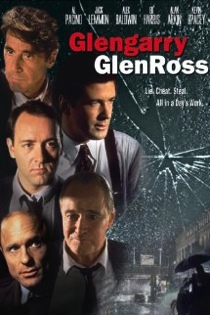 82. Glengarry Glen Ross
82. Glengarry Glen RossYear: 1992
Director: James Foley
Surely somewhere on the Internet there’s a catalog of all the potboiler plays that have been turned into lifeless movies; wherein the minimal settings came off as flat rather than intimate or claustrophobic, and the surgically written prose came off as stilted rather than impassioned. Glengarry Glen Ross is the exception and the justification for all noble stage-to-screen attempts since. This adaptation of David Mamet’s Pulitzer Prize winning play about workingman’s inhumanity to workingman still crackles today, and its best lines (and there are many) have become ingrained in the angrier sections of our collective zeitgeist. James Foley directs the playwright’s signature cadence better than the man himself, and the all-star cast give performances they’ve each only hoped to match since. Mamet, for his part, managed to elevate his already stellar material with his screenplay, adding the film’s most iconic scene, the oft-quoted Blake speech brilliantly delivered by Alec Baldwin. This is a film worthy of a cup of coffee and, as we know, coffee is for closers only.—Bennett Webber
 81. The Talented Mr. Ripley
81. The Talented Mr. RipleyYear: 1999
Director: Anthony Minghella
Many doubted anyone could do justice to the Ripley novels on celluloid, but Anthony Minghella proved them wrong in spectacular fashion. Lushly photographed, exquisitely art-directed and impeccably timed (not a scene is a moment too long or too short), it intrigues and bewilders like Hitchcock’s best work. Career performances from Matt Damon and Jude Law, plus wonderful turns from Philip Seymour Hoffman and Cate Blanchett—and the last time Gwenyth Paltrow was bearable. A frightful—and frightfully overlooked—film.—Michael Dunaway
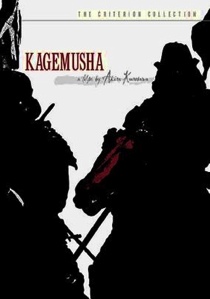 80. Kagemusha
80. KagemushaYear: 1980
Director: Akira Kurosawa
Like Rashomon before it, Akira Kurosawa’sKagemusha proves the director is as much a master of story plotting as he is perfectionist over the smallest technical nuances in his films—though here, he’s painting on a far grander canvas. Not long after the peak of their relevance, George Lucas and Francis Ford Coppola helped secure financing for Kurosawa to finally film this extraordinary, sweeping epic, with both admitting to owing the filmmaker a huge debt as an influence. That alone is excuses an Ewok (and Jack) or two.—Scott Wold
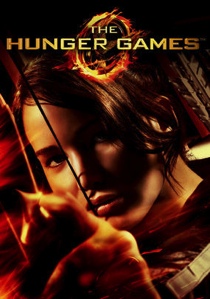 79. The Hunger Games
79. The Hunger GamesYear: 2012
Director: Gary Ross
Suzanne Collins’ futuristic dystopian society comes to life in the long-awaited debut of The Hunger Games. But it’s Jennifer Lawrence’s performance as Katniss Everdeen, the 16-year-old protagonist who unapologetically puts her life on the line to save her sister and challenge the twisted logic of the government, that has singlehandedly launched the inescapable book-turned-movie franchise. Fans of the books won’t be disappointed. With few exceptions, director Gary Ross doesn’t veer too far from Collins’ novel. It’s rare that a film based on a Young Adult novel is able to juggle so many powerful issues so profoundly, but Ross finds a way to translate Collins’ imaginative plots into a visually triumphant, emotional roller coaster of economic struggle, class warfare, politics, sacrifice, independent thinking and rebellion without compromising too much of the original manuscript.—Maggie Coughlan
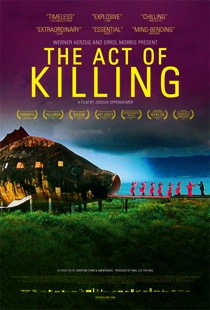 78. The Act of Killing
78. The Act of KillingYear: 2012
Director: Joshua Oppenheimer
Some tragedies are so horrific that it’s hard to reconcile one’s belief in the basic decency of human beings with the atrocities that some of them have perpetrated. Documentary filmmaker Joshua Oppenheimer’s The Act of Killing focuses on one of the darkest chapters of the 20th century, speaking to some members of the Indonesian death squads who slaughtered hundreds of thousands of their countrymen and women in 1965 and ’66. These people don’t live in the shadows, though: They’re treated like royalty in their native land, celebrated as heroes who helped “save” Indonesia from communism. The film is so shocking and depressing that its subjects’ utter disconnection from morality would almost be funny if it wasn’t so frightening.—Tim Grierson
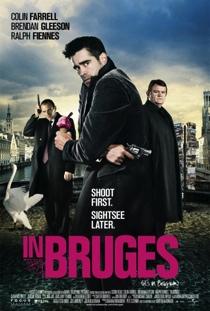 77. In Bruges
77. In BrugesYear: 2008
Director: Martin McDonagh
You know you’ve tripped into the ambiguous realm of Postmodernism when medieval Europe, midget jokes and ultraviolence converge into a seamless whole. Theater auteur Martin McDonagh’s debut feature, In Bruges, thrives on these stylistic clashes with its narrative of two sympathetic hitmen who seek refuge in a European wonderland full of tourists and irony. The film excels, painting its story through the extreme juxtaposition of its subjects, with each contrasting plot element not only understood but felt visually. This technique pits staccato violence against the surreal camera pans of Bruges’ fairy-tale cityscape, projecting the internal conflict of hired killers Ken and Ray against their new, pacifying environment. The film’s visual appeal complements irreverent and hilarious dialogue—timed brilliantly with the Anglo-Saxon bravado of Fiennes, Farrell and Gleeson—to produce one of this holiday season’s most pleasant dark-horse dramadies.—Sean Edgar
 76. Serenity
76. SerenityYear: 2005
Director: Joss Whedon
We may have never gotten a Season 2 of Firefly, the much beloved alien-free space-travel show from Joss Whedon. But at least we got a movie. InSerenity, River Tam (Summer Glau) got to really stretch her legs, kicking the asses of all kinds of Alliance baddies. And Browncoats everywhere rejoiced.—Josh Jackson
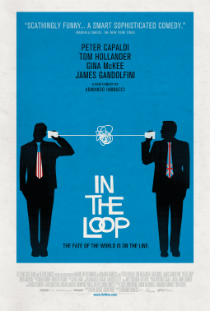 75. In the Loop
75. In the LoopYear: 2009
Director: Armando Iannucci
If clever verbal humor were easy, we’d have more comedies like In the Loop. But it’s not, and this one stands in a class of its own. It’s the most quotable film of the decade—by miles—and the cynical potty mouths on screen are so articulate and creative that, after the avalanche of witticisms, you’re left with the lingering sense that you’ve seen not just a funny movie but also a wicked political satire of the highest order, the kind where the absurdity speaks for itself.—Robert Davis
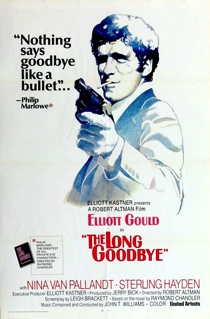 74. The Long Goodbye
74. The Long GoodbyeYear: 1973
Director: Robert Altman
To me, Altman was the best director of the 1970s, and while it’s a small tragedy that none of his other films from that decade are available on Netflix Instant, we can at least be grateful that The Long Goodbye made the cut. Starring Elliott Gould as a private eye, it showcases the actor as something other than the soft, whiny old man viewers of our generation know from shows like Friends and Ray Donovan. Under Altman’s care, here and inM*A*S*H, he’s nothing less than a badass with a cynical edge. You won’t recognize him, but you will wonder why he failed to become a leading man of the Nicholson/Pacino/Hackman variety. The story, adapted from a Raymond Chandler novel, is dark, intriguing, and ultimately just a little amoral. Like the rest of the great ‘70s film, The Long Goodbye had little use for virtue.—Shane Ryan
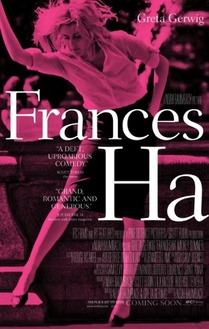 73. Frances Ha
73. Frances HaDirector: Noah Baumbach
Frances Ha is endearing, kind and, in many ways, Noah Baumbach’s best movie to date. One could trace his films, from his debut (Kicking and Screaming) to his most recent (Greenberg) and see a slow but steady focus on the individual, as well as his abandonment of an ironic, sometimes caustic stance against the very characters he writes. It is as if Baumbach could only write a certain type of person—the privileged, socially crippled intellectual with either too much self-awareness or none at all—and for a while it seemed like even the writer himself couldn’t stand to be in the same room with such characters. This anger has faded, and what has emerged over his last few films, and culminated in Frances Ha, is an embrace of not only the flaws of his characters, but also his flaws as a filmmaker. He has settled down and created a film imbued with love, fun and melancholy. It feels simple and open and is a joy to watch.—Joe Peeler
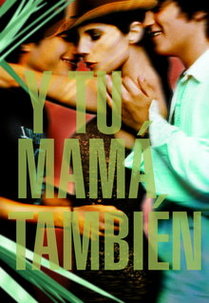 72. Y Tu Mama Tambien
72. Y Tu Mama TambienDirector: Alfonso Cuarón
Year: 2001
A road trip along the coast of Mexico turns out to be one of sexual discovery for two punk teenagers (Gael Garcia Bernal and Diego Luna). Meanwhile, the trip turns out to be the bittersweet final adventure for their older female companion (Maribel Verdu), as she struggles with a life full of regret and roads not yet traveled. Y Tu Mama Tambien is at times playful and seductive, but slowly reveals itself to be a substantive dual story involving both coming-of-age and coming-to-terms.—Jeremy Medina
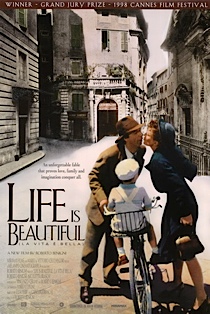 71. Life Is Beautiful
71. Life Is BeautifulYear: 1997
Director: Roberto Benigni
Italian writer, director, actor and concentrated ball of exuberance Roberto Benigni brought comedy to a story of a Nazi concentration camp without downplaying the tragedy. We all want to give our children their childhood, and his character’s efforts to do just that make the horror all the more relatable. The film tugs at heartstrings, but Benigni plays them so well, you’ll forgive any hint of emotional manipulation.—Josh Jackson
 70. The Italian Job
70. The Italian JobYear: 2003
Director: F. Gary Gray
The Italian Job is different from other heist movies in that it’s not all about the money or even the challenge of just trying to steal something without getting caught. Thought it still has the requisite wise-cracking and motley- yet-somehow close-knit-crew of thieves like countless other heist movies, The Italian Job is more about betrayal and revenge. Plus, Mini Coopers have never looked so cool.—Anita George
 69. Bernie
69. BernieYear: 2011
Director: Richard Linklater
Bernie is as much about the town of Carthage, Texas, as it is about its infamous resident Bernie Tiede (Jack Black), the town’s mortician and prime suspect in the murder of one of its most despised citizens, Marjorie Nugent (Shirley MacLaine). Unlike Nugent, Bernie is conspicuously loved by all. When he’s not helping direct the high school musical, he’s teaching Sunday school. Like a well-played mystery, Linklater’s excellent, darkly humorous (and true) story is interspersed with tantalizing interviews of the community’s residents. Linklater uses real East Texas folks to play the parts, a device that serves as the perfect balance against the drama that leads up to Bernie’s fatal encounter with the rich bitch of a widow. The comedy is sharp, with some of the film’s best lines coming from those townsfolk.—Tim Basham
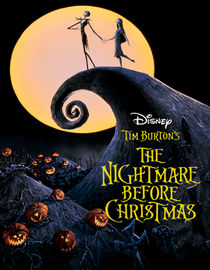 68. The Nightmare Before Christmas
68. The Nightmare Before ChristmasYear: 1993
Director: Henry Selick
On simply a shot-by-shot basis, The Nightmare Before Christmas ranks as one of the most visually splendid films ever made. Jack Skellington, the Pumpkin King of Halloweentown, becomes obsessed with Christmas and decides to hijack the holiday. Often presented under the title Tim Burton’s The Nightmare Before Christmas, the film echoes many of the hit director’s pet themes, with Jack being one of Burton’s many brooding artistic protagonists. The film’s actual director was Henry Selick, who oversees an ingenious design and a cast of endearing monsters. The film doesn’t quite have the narrative fuel and graceful song lyrics to match Disney’s best animated musicals, but every year the film looks better and better.—Curt Holman
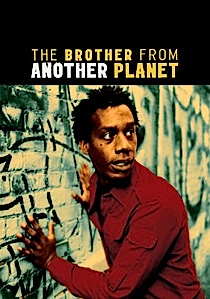 67. The Brother From Another Planet
67. The Brother From Another PlanetYear: 1984
Director: John Sayles
During the ’80s, John Sayles established himself as a smart indie writer/director with a knack for social commentary. But only one of his films embedded said commentary into a zany sci-fi plot. The result is the story of a mute alien who looks like a black man with weird feet, who crash-lands in Harlem and meets and observes the people of New York City. Joe Morton gives a stellar silent performance that, like the film itself, seamlessly moves from comic to empathetic.—Jeremy Mathews
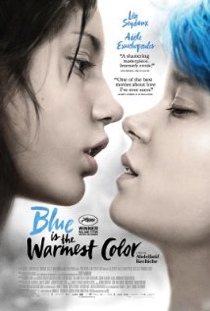 66. Blue is the Warmest Color
66. Blue is the Warmest ColorYear: 2013
Director: Abdellatif Kechiche
Three-hour movies usually are the terrain of Westerns, period epics or sweeping, tragic romances. They don’t tend to be intimate character pieces, but Blue Is the Warmest Color (La Vie D’Adèle Chapitres 1 et 2) more than justifies its length. A beautiful, wise, erotic, devastating love story, this tale of a young lesbian couple’s beginning, middle and possible end utilizes its running time to give us a full sense of two individuals growing together and apart over the course of years. It hurts like real life, yet leaves you enraptured by its power.—Tim Grierson
 65. Dead Man
65. Dead ManYear: 1995
Director: Jim Jarmusch
Jim Jarmusch directed this post-modern examination of the western film genre as American pop culture finally began to veer away from the expected western films. Jarmusch introduced a complete retrospection of a genre plagued with so many social follies. Depp’s somber, quiet character, William Blake, is reflective of the heroes of the Wild West’s past, but it’s his journey that makes this character stand apart.—Clint Alwahab
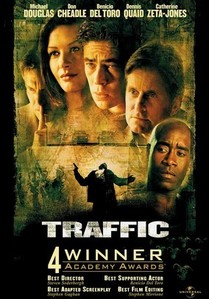 64. Traffic
64. TrafficYear: 2000
Director: Steven Soderbergh
Steven Soderbergh’s simulated documentary about modern drug culture twists and glides with a calculation as deep and complex as the cavernous topic it so effectively dissects. Ever the visionary, Soderbergh displays an objective, impartial eye (quite literally—he photographed the film as Peter Andrews), digging into his characters’ explosive trajectories as they reach their tragic and ambiguous ends, and leaving us with more questions than answers.—Sean Edgar
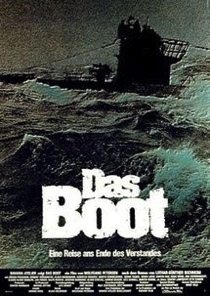 63. Das Boot
63. Das BootYear: 1981
Director: Wolfgang Petersen
The Germans weigh in on World War II in a positively claustrophobic film set inside a submarine. Wolfgang Petersen’s genius was filming over the course of a year, in sequence. The strain of the production schedule shows on the actors’ faces as the film progresses. By movie’s end, we’re not quite sure who we should be cheering for, which reminds us that on human terms, no one wins a war. —Joan Radell
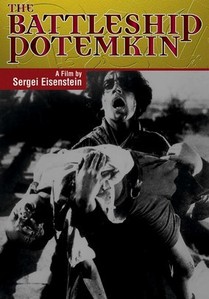 62. Battleship Potemkin
62. Battleship PotemkinDirector: Sergei M. Eisenstein
Year: 1925
Because of brutal living conditions, the crew of the Prince Potemkin revolts against their cruel officers, igniting a rebellion in Russia and a violent massacre in Odessa. For the longest time, people consideredBattleship Potemkin the greatest achievement in cinema. It may no longer have that acclaim, but it still makes most top ten lists and holds its ground as the greatest propaganda film of all time. At one point a few countries even banned it, afraid of its power to provoke political revolution. Many of its scenes, so visually poignant and thus unforgettable, have been referenced in modern movies like Brazil, The Untouchables and Naked Gun 33 1/3.—David Roark
 61. Shakespeare in Love
61. Shakespeare in LoveYear: 1998
Director: John Madden
Another film whose reputation has suffered somewhat since its initial reception, largely in this case as a result of an ill-considered Oscar and Gweneth Paltrow’s ill-considered management of her public persona since then. No one is more annoyed with latter-day Goop than me, but even I can admit that Shakespeare in Love gets a bad rap. It’s delightful, especially for those with any experience in the theater whatsoever (the theater world itself is the romantic interest of the film, every bit as much as Gweneth’s Viola de Lesseps). And, it’s now safe to say out loud – Ben Affleck is fantastically charming in this film. If you haven’t seen it in awhile, you’ll be surprised at how much more you like it than you remembered.—Michael Dunaway
 60. Brokeback Mountain
60. Brokeback MountainYear: 2005
Director: Ang Lee
While his performance as the Joker in The Dark Knight certainly deserves the acclaim it’s been given, Heath Ledger’s true tour de force was his understated work in Brokeback Mountain. Ledger brought a driving force to the movie which complimented its contemplative tone and showed a true, classical brilliance in acting that left you convinced that his character was real.—Sean Gandert
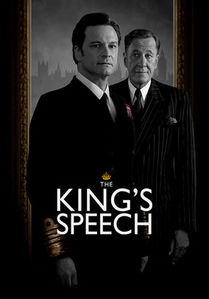 59. The King’s Speech
59. The King’s SpeechYear: 2010
Director: Tom Hooper
Acting is a funny thing to judge. Often, the performances we most admire are those where actors stretch themselves the furthest by taking on roles with handicaps. Portraying the stuttering Prince Albert, who would become King George VI of Britain, Colin Firth maintains a constant aura of frustration. It’s not the way that a non-stuttering actor stutters that makes him believable, but the pitch-perfect emotional resonance of gifted actor. And while the performances of his co-stars—Helena Bonham Carter as Queen Elizabeth and Geoffrey Rush as the king’s Australian speech therapist Lionel Logue—aren’t highlighted by such an obvious physical obstacle, they’re both subtly brilliant. It’s the interplay between all three actors—and the brief scenes with Michael Gambon as King George V—that make Tom Hooper’s film such a joy to watch.—Josh Jackson
 58. Blue Valentine
58. Blue ValentineYear: 2010
Director: Derek Cianfrance
Most films about disintegrating marriages are grim, gray affairs, and filmmakers often use the device as an excuse to punish their audiences. But Blue Valentine is different—the story is told with such overwhelming tenderness and humanity that although the slow unraveling of Dean’s (Ryan Gosling) and Cindy’s (Michelle Williams) love is still heartbreaking, it feels like the director’s heart is breaking along with yours. That’s rare. It doesn’t hurt that Gosling is in top form, or that Williams gives the finest performance of her career. The script was promising enough to win the Chrysler Film Project even before those performances were turned in, and indie favorites Grizzly Bear contributed a haunting soundtrack. There was really nothing in director Derek Cianfrance’s resume to suggest he had such a nuanced, sensitive film in him, but we’ll certainly be watching his career with interest from here on out.—Michael Dunaway
 57. Mud
57. MudYear: 2013
Director: Jeff Nichols
In 2011, Jeff Nichols turned heads at Sundance with his second film Take Shelter,as did his fast-rising stars Jessica Chastain and Michael Shannon. He returned two years later with Mud, a coming-of-age thriller about two young boys who encounter a man on the run in rural Arkansas. It’s a sweet tale that displays plenty of faith in humanity without ever veering into sappiness and always keeping you on the edge of your seat—just the kind of thing you hope to find at a festival like Sundance. And Nichols once again coaxes amazing performances from his cast, particularly Matthew McConaughey, just before the actor went to work on Dallas Buyer’s Club and True Detective.—Josh Jackson
 56. The Ice Storm
56. The Ice StormYear: 1997
Director: Ang Lee
In 1997 Ang Lee followed up his Oscar-winning Jane Austen adaptation Sense and Sensibility with yet another literary adaptation—Rick Moody’s acclaimed, if more obscure, 1994 novel, The Ice Storm. Set primarily around Thanksgiving 1973, the film explores the misadventures of a suburban Connecticut family as they attempt to cope with the alienation and confusion of the times through drugs, extramarital affairs and swinging “key parties.” Featuring phenomenal performances from Joan Allen, Kevin Kline and a teenage Christina Ricci—not to mention luminous cinematography courtesy of DP Frederick Elmes— The Ice Storm may very well stand as the greatest film Lee has ever made.—Mark Rozeman
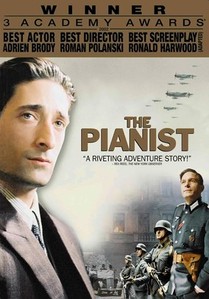 55. The Pianist
55. The PianistYear: 2002
Director:
While many great performances rely on dramatic and affecting dialogue, Adrien Brody’s turn as real life musician Wladyslaw Szpilman in Roman Polanski’s Holocaust drama The Pianist is hushed, a sullen-eyed lost soul hanging on to a world cloaked in gray. As the title character, Brody became a living skeleton, an all-too-real representation of one of history’s darkest periods.—Justin Jacobs
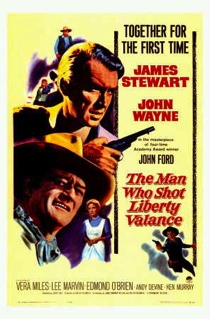 54. The Man Who Shot Liberty Valance
54. The Man Who Shot Liberty ValanceYear: 1962
Director: John Ford
When it comes to the movies’ finest moments of cynical/wise dialogue, Chinatown’s “Forget it Jake, it’s Chinatown” may be the only equal to “This is the West, sir. When the legend becomes fact, print the legend,” the epitaph for John Ford’s superb Western. The Man Who Shot Liberty Valance is about how Americans tend to romanticize the past, in the process losing a grasp on the facts, and so it’s appropriate that some viewers may have forgotten that neither of the film’s stars (James Stewart and John Wayne) actually plays Liberty Valance (Lee Marvin), the feared gunman who threatens Stewart’s mild-manned lawyer. A story about living with secrets and questioning history, The Man Who Shot Liberty Valance presages stellar revisionist Westerns like McCabe & Mrs. Miller and The Assassination of Jesse James by the Coward Robert Ford.—Tim Grierson
 53. Capote
53. CapoteYear: 2004
Director: Bennett Miller
In the same manner that In Cold Blood depicted the pristine scenes of Holcomb, Kansas, and the two men who disturbed them with a quadruple murder, Seymour Hoffman offered a precise-yet-chilling depiction of the man who helped found New Journalism. In turn, his performance burst apart Capote’s carefully crafted narrative to show just how haunted the writer himself had become.—Christina Lee
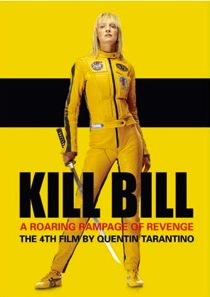 52. Kill Bill Vol. 1 and Vol. 2
52. Kill Bill Vol. 1 and Vol. 2Year: 2003, 2004
Director: Quentin Tarantino
Quentin Tarantino Kill Bill Vol. 1 was both a great movie and a great martial-arts movie that paid homage to a ton of classic martial-arts flicks (both Chinese and Japanese) to make a really visceral, offbeat cinema experience unlike any other (well, at least until Vol. 2 came out). Scenes like the incredibly gory but artistic tea house battle with the Crazy 88 or the intensely claustrophobic kitchen showdown are excellent examples of everything that makes a martial-arts movie great and when combined with Tarantino’s usual hallmarks, the results are truly transcendent.—K. Alexander Smith
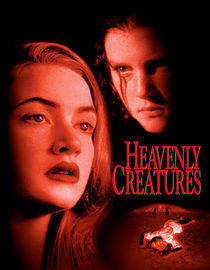 51. Heavenly Creatures
51. Heavenly CreaturesYear: 1994
Director: Peter Jackson
Before making this feverish biopic based on a notorious case in New Zealand history, Peter Jackson was best known for grisly horror comedies like Brain Dead (released in U.S. as Dead Alive).Heavenly Creatures captures the psychological landscapes of two teenage girls (Kate Winslet and Melanie Lynskey in their big screen debuts) whose obsession with their shared imaginary world draws them further from reality. Without Jackson’s breathless narrative and ingenious fantasy scenes in Heavenly Creatures, he never would have gotten the Lord of the Rings gig, butCreatures stand on its own as a compelling thriller and commentary on moral hypocrisy. In real life, Winslet’s character grew up to be mystery writer Anne Perry.—Curt Holman
 50. The Kid With a Bike
50. The Kid With a BikeYear: 2011
Directors: Jean-Pierre Dardennes, Luc Dardenne
As portrait of a young boy’s resilience and of compassion shown by one human being towards another, The Kid with a Bike is part of the grand tradition of humanist realism. Watching the Dardennes’ cinema, one can’t help but be reminded of luminous predecessors like The 400 Blows andBicycle Thieves, movies featuring marginalized children forced to endure hostile environments. But, more than any other filmmaker, their work bears the strongest resemblance to that of the late master Robert Bresson. With their powerful moral undercurrents, minimalist acting and ascetic style, Bresson’s films (Mouchette would make an excellent companion piece to The Kid with a Bike) weren’t concerned so much with stories and characters as with the ideas they helped to illuminate—namely the continual war between man’s baser and higher instincts, between the evils of mistrust and crime, and the virtues of charity, compassion and love. The Kid with a Bike is a beautifully executed variation on those themes.—Jay Antani
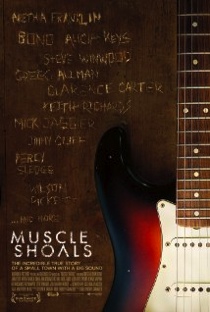 49. Muscle Shoals
49. Muscle ShoalsYear: 2013
Director: Greg “Freddy” Camalier
Freddy Camalier’s masterly Muscle Shoals is about the beginnings and heyday of the recording scene in Muscle Shoals, Ala., a tiny town that improbably changed the face of rock ‘n’ roll, putting out along the way some of the greatest records in the history of American music. Many of those moments are recounted to great effect in the film; first-timer Camalier is obviously a natural storyteller. But there’s so much more to the doc—the cinematography is lush and beautiful, the editing is crisp and precise, and it’s in turns heartbreaking, inspiring, wry, thought-provoking, nostalgic and genuinely funny. It’s simply a stunning debut film. It helps that Camalier and his producing partner Stephen Badger are after more here than just a dry lesson in musical history. They delve into the Civil Rights Movement and its effect specifically on Alabama, especially as it relates to a Muscle Shoals music scene that was, shockingly enough, lacking in any racial tension. They return again and again to the ancient Native American legend about the river that flows through the town and the water spirit who lived there, sang songs and protected the town. And the personal life of Fame Records founder Rick Hall, the protagonist of the film, is itself worthy of a Faulkner novel. It’s thrilling, it’s engaging, it’s fascinating, it’s stirring. It’s the best documentary of the year, whether you’re a music lover or not.—Michael Dunaway
 48. Ghost Dog: The Way of the Samurai
48. Ghost Dog: The Way of the SamuraiYear: 2000
Director: Jim Jarmusch
After making Dead Man, a Western film about a meek Ohio accountant and a Native American warrior, indie auteur Jim Jarmusch blended Oriental philosophy with gangster reality in Ghost Dog: The Way of the Samurai. Forest Whitaker plays the title character, a hit man who adopts the code of the Hagakure, a training manual for 18th-Century would-be samurai.—Josh Jackson
 47. The Good The Bad and the Ugly
47. The Good The Bad and the UglyYear: 1966
Directed by: Sergio Leone
Director Sergio Leone and star Clint Eastwood hit the ground running with their first collaboration A Fistful of Dollars, which took a Western interpretation of Akira Kurosawa’s samurai filmYojimbo. Following the adventures of Eastwood’s Man With No Name, the Dollars trilogy continued on through 1965’s For a Few Dollars More and, finally, to 1966’s The Good, The Bad and The Ugly. Only the latter two are available on Netflix Instant, but The Good, The Bad and the Ugly stands just fine alone as one of the best spaghetti Westerns of all time.—Mark Rozeman
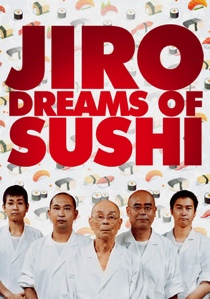 46. Jiro Dreams of Sushi
46. Jiro Dreams of SushiYear: 2012
Director: David Gelb
Jiro Dreams of Sushi is a documentary about one of the greatest masters of the culinary world, one whom casual foodies have never even heard of. Although Jiro’s work is ostensibly the focus of the documentary, the film is really propelled by the story of his relationship with his two sons; the youngest of whom has started his own restaurant, and the oldest of whom, at the age of 50, continues to work with his father, training to one day take over his restaurant. Devoid of the typical familial jealousy you may expect, Jiro Dreams of Sushi is instead a beautifully filmed documentary about a father and his sons who have devoted their lives to the pursuit of the perfect piece of sushi. —Emily Kirkpatrick
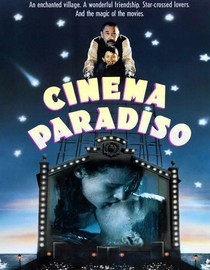 45. Cinema Paradiso
45. Cinema ParadisoYear: 1988
Director: Giuseppe Tornatore
Giuseppe Tornatore’s ode to film and love provided a shot in the arm to Italy’s film industry, as well as that rarest of films—the “great subtitled date film”—for the American film-goer. It also took home the Oscar for Best Foreign Film. (The extended cut of the film reveals a more complicated take on nostalgia and the film’s father figure.)—Michael Burgin
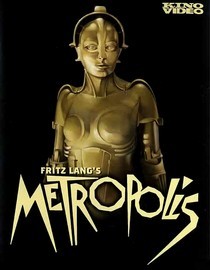 44. Metropolis
44. MetropolisYear: 1927
Director:Fritz Lang
Though in hindsight the actual story proves pretty wacky, Fritz Lang’s last silent film—before his second masterpiece M—could be called the blueprint for all sci-fi films that followed it. Whether the groundbreaking special effects, the visual scope or the intricate set design, greats such as Ridley Scott, George Lucas and Stanley Kubrick have borrowed from it (Lucas modeled C-3PO directly after the Maria robot). Metropolis, heavily influenced by the books of H.G. Wells, also stands as the first dystopian film in history.—David Roark
 43. Broadcast News
43. Broadcast NewsYear: 1987
Director: James L. Brooks
One of the sharpest written, best-acted romantic comedies of the ‘80s, Broadcast News soars on the performances of Holly Hunter, William Hurt and Albert Brooks. Sure, it says things about the state of media—some of which are pretty prescient—but watching the film’s three leads inhabit their characters is a joy in and of itself.—Michael Burgin
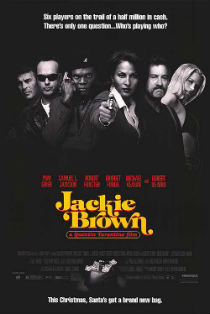 42. Jackie Brown
42. Jackie BrownYear: 1997
Director: Quentin Tarantino
Quentin Tarantino’s underappreciated gem Jackie Brown sees Pam Grier as the title character who shakes up the world of bail bondsman Max Cherry (Robert Forster). One of the most brilliant notes in both the main actors’ performances is the stillness that each brings to his character. But if the actors are part of the orchestra, so is the music.—Michael Dunaway
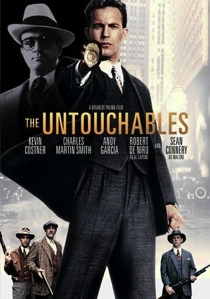 41. The Untouchables
41. The UntouchablesYear: 1987
Director: Brian De Palma
Al Capone and Eliot Ness—the quintessential gangster and the original G-Man—lock horns during Prohibition in one of the greatest American cop movies ever made. The all-star cast is great, but it’s Sean Connery as Ness’s sidekick, Jim Malone, who elevates this film from standard shoot-em-up to high drama. Director Brian DePalma juxtaposes the stylized and slick with the violent and vulgar, and the contrast serves to heighten our awareness of each. The costumes are rich, the dialogue is a pulp-writer’s dream, and the fact that Capone is brought down by the office nerd makes everyone feel great.—Joan Radell
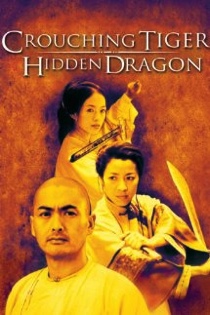 40. Crouching Tiger, Hidden Dragon
40. Crouching Tiger, Hidden DragonYear: 2000
Director: Ang Lee
Ang Lee’s Oscar-winning epic is not only the highest-grossing foreign film ever, but also happens to be yet another foreign film that changed the cinematic landscape: a kung fu flick with heart and soul. Chow Yun-Fat, Michelle Yeoh and Zhang Ziyi play 19th-century warriors whose loyalty and vitality are tested by a series events that lead each to contemplate their life’s decisions. Beyond the entracing and lyrical storytelling, Crouching Tiger stands as a rare, beautiful beacon of hope: a foreign film that was actually universally embraced by Western audiences. Here’s to hoping that happens more often. —Jeremy Medina
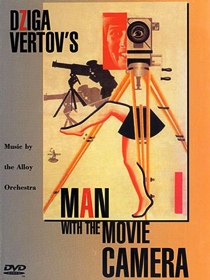 39. Man With a Movie Camera
39. Man With a Movie CameraYear: 1929
Director: Dziga Vertov
Some groundbreaking movies from cinema’s earliest days now seem merely quaint, their innovations fully absorbed into the DNA of modern filmmaking. Then there’s Man With a Movie Camera, which 85 years after its release still feels fresh. An experimental non-narrative directed by Dziga Vertov, a contemporary of Sergei Eisenstein (Battleship Potemkin), Man With a Movie Camerais an impressionistic portrait of urban life, giving us no characters but, rather, the sense of the complex comings and goings of everyday people through a city. One of the first examples of movies’ limitless freedom, this silent film demonstrates how we’ve always been fascinated by watching ourselves up there on the screen. Man With a Movie Camera is such a cornerstone of film history, newcomers may well be shocked how fun and playful it is.—Tim Grierson
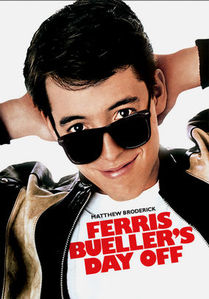 38. Ferris Bueller’s Day Off
38. Ferris Bueller’s Day OffYear: 1986
Director: John Hughes
John Hughes’ zeitgeist-y, fourth wall-busting ode to rich, entitled suburban youth vs. killjoy authority announced Matthew Broderick as a bona fide star, and gave us a chillingly prescient glimpse at Charlie Sheen’s future in an admittedly funny bit role.Breakfast Club aside, out of all Hughes’ decade of teen-centric movies set in the Chicago area, Buellerhas almost certainly endured the best, and without all that tortured pretentiousness.—Scott Wold
 37. The General
37. The GeneralDirector: Buster Keaton and Clyde Bruckham
Year: 1926
Plot: When Yankee spies steal his locomotive and kidnap his girlfriend, a Southern railroad engineer (“The Great Stone Face” Buster Keaton) is forced to pursue his two beloveds across enemy lines.
Why it matters: While a few Charlie Chaplin pictures give it a run for its money, The General is arguably the finest silent comedy ever made—if not the finest comedy ever made. At the pinnacle of Buster Keaton’s renowned career, the film didn’t receive critical or box-office success when released, but it has aged tremendously. It’s a spectacle of story, mishmashing romance, adventure, action (chases, fires, explosions) and comedy into a seamless silent masterpiece.—David Roark
 36. Waking Ned Devine
36. Waking Ned DevineYear: 1998
Director: Kirk Jones
Waking Ned Devine may be the most feel-good heist flick ever made. Ned is an old-timer in a small Irish village who wins the lottery and dies from the shock of it. Two of his old-timer buddies, Jackie (Ian Bannen) and Michael (Fawlty Towers’ David Kelly), decide to scam the big-city lotto agent into thinking that one of them is Ned, alive and well. What ensues is not so much a con-artist caper but more an Irish celebration of community, camaraderie and the spirit of human generosity. Other Irish themes championed: whiskey, lush landscapes, poetry, naked old dudes riding motorcycles, whiskey and the fiddle. Did we mention whiskey?—Ryan Carey
 35. 4 Months, 3 Weeks and 2 Days
35. 4 Months, 3 Weeks and 2 DaysYear: 2007
Director: Christian Mungui
With eerily realistic performances and stunning direction, 4 Months, 3 Weeks, and 2 Dayscombines an uncomfortably forthright discussion of abortion with long, virtuosic handheld camera takes. In Cristian Mungui’s hand, these shots are more than just a gimmick; they position the audience behind the camera and refuse to let us look away from the horrors on screen. At times, it’s difficult to watch, but few films have ever displayed as perfect a marriage of form and content.—Sean Gandert
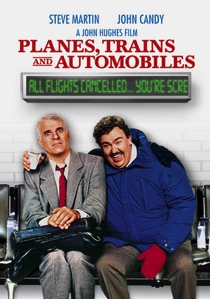 34. Planes, Trains and Automobiles
34. Planes, Trains and AutomobilesYear: 1987
Director: John Hughes
Anyone who’s ever endured holiday traffic on their way home for Thanksgiving can relate to this John Hughes tale—although hopefully you’ve never had to endure the sheer number of transportation mishaps (not to mention some accidental spooning) Steve Martin and John Candy go through.—Bonnie Stiernberg
 33. Double Indemnity
33. Double IndemnityYear: 1944
Director: Billy Wilder
Long before the Boomers came to know Fred MacMurray as the kindly father on My Three Sons, the actor essayed his best performance inDouble Indemnity as the deplorable, hard-boiled Walter Neff, who falls for a married temptress (Barbara Stanwyck) who talks him into killing her husband. Whether in film or on television, MacMurray normally played the nice guy, but forDouble Indemnity he turned his everyman decency into a mask—perfect for a character who can barely conceal what a lustful, conniving bastard he is. One of the great noirs, this early effort from Billy Wilder revealed the filmmaker’s talent for wonderfully thorny, unapologetically rotten characters—and it doubles as one of the definitive mid-century Los Angeles movies.—Tim Grierson
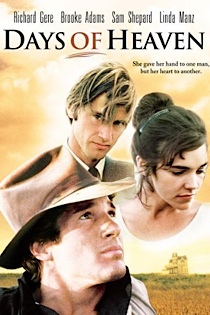 32. Days of Heaven
32. Days of HeavenYear: 1978
Director: Terrence Malick
Terrence Malick recreated the biblical story of Abraham and Sarah as an American myth as large as the southwest it’s supposed to take place in. One of the most immediately noticeable aspects of the film is its stunning cinematography. Following the tradition of the French New Wave and other independent American pictures from the ‘70s, director of photography Nestor Almendros rejected artificial lighting as much as he felt he could and the result is a picture that feels like nothing else from the period. With Badlands Malick found out how to make a film, but it was with Days of Heaven that he found his mature style, and since then he’s used the same elliptical, minimalist storytelling and improvised scenes in everything he’s done.—Sean Gandert
 31. Rocky
31. RockyYear: 1976
Director: John G. Avildsen
Rocky may be the one of the most inspirational films of all time. The movie poses the question: What happens when a small-time boxer from Philadelphia gets a one-in-a-million shot at the World Heavyweight Championship? All Rocky Balboa wanted to do was prove that he wasn’t a bum and that he could go the distance with Apollo Creed. With a budget under 1 million dollars, Rocky would go on to win an Academy Award for Best Picture in 1976 and spawn the ultimate sports movie series. Talk about an awesome soundtrack.—Gregory Eckert
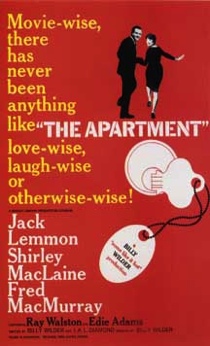 30. The Apartment
30. The ApartmentYear: 1960
Director: Billy Wilder
Filmmaker Billy Wilder had perhaps one of the greatest, most diverse track records in film history from 1944 to 1960. In this period, he tackled an Oscar-winning drama about alcoholism (The Lost Weekend), two well-regarded film noirs (Double Indemnity, Sunset Boulevard), a war drama (Stalag 17), two light-hearted rom-coms (Sabrina,Seven Year Itch) a gripping murder-mystery (Witness for the Prosecution) and perhaps the funniest American movie of all time (Some Like It Hot). Yet, of all these golden credits, one Wilder’s most beloved and memorable achievements was 1960’s The Apartment. Jack Lemmon plays C.C. Baxter, an ambitious office worker who, desperate to climb the corporate ladder, allows his bosses to use his apartment to carry on discreet affairs with their mistresses. Things get complicated, however, when he discovers that his office crush, quirky elevator operator Fran Kubelik (Shirley MacLaine), is one of his bosses’ mistresses. While it actually gets quite dark at times, The Apartment strikes a perfect balance between laugh-out-loud comedy and emotionally honest drama. Following the career highlight that was his drag-heavy performance in Some Like It Hot, Lemmon here proves that he can play the low-key, straight man with equal dexterity. Likewise, MacLaine’s charming portrayal as the damaged, yet lovable Kubelik would provide the model for manic pixie dream girls for years to come.—Mark Rozeman
 29. The Conversation
29. The ConversationYear: 1974
Director: Francis Ford Coppola
The really incredible fact about this film is that Coppola made it as a side project betweenGodfather movies (which I’ve left off purposefully despite their greatness). Starring Gene Hackman, it’s the story of a surveillance technician coming face to face with the implications of his job, and the paranoia of being watched at every moment. It was nominated for Best Picture in 1974, an award that went to The Godfather, Part II. It’s one of the rare times in film history when a director has lost to himself.—Shane Ryan
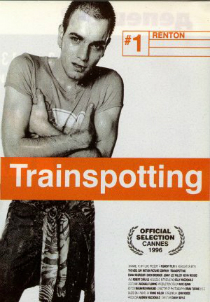 28. Trainspotting
28. TrainspottingYear: 1996
Director: Danny Boyle
Based on the gritty Irvine Welsh novel of the same name, this early film from the director of Slumdog Millionaire and Millions follows a thuggish group of heroin addicts in Scotland and features brilliant performances from young Ewan McGregor, Kelly Macdonald and Robert Carlyle. At times funny, gripping and nightmarishly haunting, Trainspottingis not an easy movie to forget.—Josh Jackson
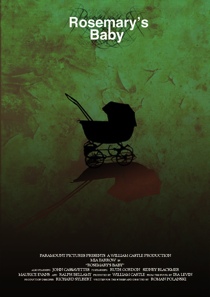 27. Rosemary’s Baby
27. Rosemary’s BabyYear: 1968
Director: Roman Polanski
The most famous of Polanski’s paranoid thrillers, not to mention the most inviolable. The film infiltrates a privileged space of middle-class entitlement and pollutes it with the most extreme evil possible: sweet, unassuming Rosemary (Mia Farrow) is pregnant, but could her baby already belong to someone else? The volatile climax has an answer, and the sequence has remained one of the most celebrated in horror history for good reason.—Sean Edgar
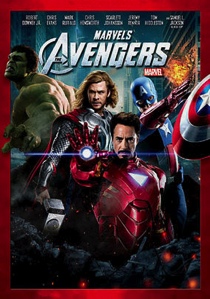 26. The Avengers
26. The AvengersYear: 2012
Director: Joss Whedon
While Joss Whedon smartly recognizes how key Robert Downey Jr.’s Stark is to the story, he also allows most all of his cast, heroes and villain, ample opportunities to shine, both in dialogue and action. (Hawkeye and Nick Fury, not so much.) It can’t be overstated how crucial such balance is to a team film. As Loki, Hiddleston may be the best-cast arch-villain since Ian McKellen’s Magneto. (This bodes well for the “shared universe” Marvel Studios is building. Just as in its comic books, Marvel needs its villains to emit suitable levels of dastardliness. Let’s just hope there are enough British stage and screen actors to supply its needs.) The rest of the principals—particularly Hemsworth, Evans and Ruffalo—inhabit their characters so seamlessly, the viewer can just move straight to the wonder and fun of it all.—Michael Burgin
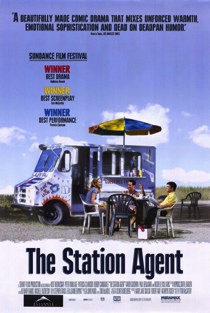 25. The Station Agent
25. The Station AgentYear: 2003
Director: Thomas McCarthy
One of the early breakout roles for Game of Thrones’ Peter Dinklage was this warm, funny story of a reclusive man who moves into an abandoned train depot. Director Thomas McCarthy has made a career of caring deeply for his characters in films like The Visitor and Win Win, and here it’s to slowly convince Dinklage’s Finbar McBride that his low view of humanity might just be wrong. It’s a contemplative, tender, hilarious film that feels both real and uplifting. If only George R.R. Martin would give Tyrion this kind of break.—Josh Jackson
 24. Hotel Rwanda
24. Hotel RwandaYear: 2004
Director: Terry George
While Hotel Rwanda attempts to document the country’s genocide in 1994, it does so by focusing on the character of Rusesabagina (played by Don Cheadle), who gave refuge to hundreds of fleeing Tutsis. Calling in dozens of favors with his extensive network of contacts, he was able to hold the Hutu extremists (the Interahamwe militia) at bay, until the Tutsi rebels drove the Hutu from power. Cheadle portrays Rusesabagina as an efficient manager who cares deeply about his family and the people in he looks after. It’s a gripping film that bears witness to both a historic tragedy and one man’s bravery. “I never thought I was doing something different,” Rusesabagina modestly told Paste just after the film’s release. “I thought I was just acting as a normal hotel manager.”—J. Robert Parks
 23. Airplane
23. AirplaneYear: 1980
Director: Jim Abrahams
The writing trio of Jerry Zucker, Jim Abrahams and David Zucker (ZAZ) defined a genre with their disaster-movie spoof in 1980. The jokes fly fast and furious, from the “Who’s on First” confusion of a crew that includes Roger and Captain Oveur (“Roger, Roger. What’s our vector, Victor?”) to Oveur (Leslie Nielson) asking a kid in the cockpit, “Joey, do you like movies about gladiators?” to an old lady translating jive (“Jive-ass dude don’t got no brains anyhow! Shiiiiit!”) to “stop calling me Shirley!” Ridiculous and ridiculously quotable, it’s the funniest spoof film of all time.—Josh Jackson
 22. Donnie Darko
22. Donnie DarkoYear: 2001
Director: Richard Kelly
Richard Kelly was just 25 when he got funding for his first full-length feature, Donnie Darko, but it became a cult classic, thanks to mind-bending twists and a gigantic talking bunny named “Frank.” Trippy, clever, dark and fun, it’s worth revisiting every few years. Just don’t ever doubt our commitment to Sparkle Motion.—Josh Jackson
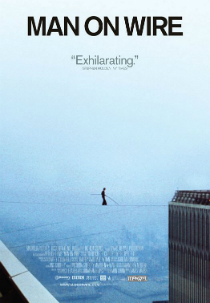 21. Man on Wire
21. Man on WireYear: 2008
Director: James Marsh
In 1974, high-wire walker Philippe Petit fulfilled a longstanding dream by sneaking into New York’s World Trade Center, stringing a cable between the tops of the two towers, and—with almost unfathomable guts—walking across it without a net. The man is clearly a nut, but he’s also a great storyteller with a heck of a story, and Man on Wiregives him a chance to tell it. Petit’s stunt was both an engineering challenge and a test of, well, a test of something that most of us don’t possess in this much quantity. Filmmaker James Marsh uses standard documentary techniques, combining new interviews with a satisfying pile of footage and photographs, but his film has the suspense of a caper movie. The title comes from the report written by a police officer who was more than a little uncertain about how to respond to the audacity on display.—Robert Davis
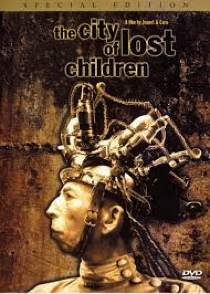 20. The City of Lost Children
20. The City of Lost ChildrenYear: 1998
Directors: Jean-Pierre Jeunet, Marc Caro
Ron Perlman plays the reluctant hero as a circus strongman looking for his adopted little brother. Marc Caro (Delicatessen) and Jean-Pierre Jeunet (Amélie) team up to create a wildly imaginative dystopian universe. A mad scientist is harvesting children’s dreams in order to keep himself young. Perlman’s character One enlists the help of an orphaned street-thief named Miette. Fans of Terry Gilliam and Michel Gondry will appreciate this surreal masterpiece.—Josh Jackson
 19. Lock Stock and Two Smoking Barrels
19. Lock Stock and Two Smoking BarrelsYear: 1998
Director: Guy Ritchie
The debut film from Guy Ritchie, this super stylistic take on the gangster formula pays homage to the work of Quentin Tarantino. From the sardonic humor, to slapstick violence, to the twisty plot, you could call it the British Reservoir Dogs on crack. Its obtrusive soundtrack—a mix of classic rock, reggae and pop—brings it all together.—David Roark
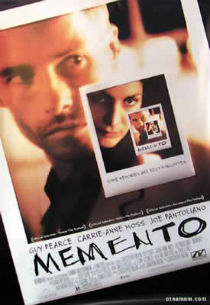 18. Memento
18. MementoYear: 2000
Director: Christopher Nolan
During a brutal attack in which he believes his wife was raped and murdered, insurance-fraud investigator Leonard Shelby (played with unequivocal intensity, frustration and panic by Guy Pearce) suffers head trauma so severe it leads to his inability to retain new memories for more than a few minutes. This device allows Nolan to brilliantly deconstruct traditional cinematic storytelling, toggling between chronological black-and-white vignettes and full-color five-minute segments that unfold in reverse order while Pearce frantically searches for his wife’s killer. The film is jarring, inventive and adventurous, and the payoff is every bit worth the mind-bending descent into madness.—Steve LaBate
 17. Terminator 2: Judgement Day
17. Terminator 2: Judgement DayYear: 1991
Director: James Cameron
That rare sequel that trumps its predecessor, James Cameron and co-writer William Wisher Jr. crafted a near-perfect action-movie script that flipped the original on its head and let Ahnold be a good guy. But it’s Linda Hamilton’s transformation from damsel-in-distress to bad-ass hero that makes the film so notable. Why should the guys get all the good action scenes? This may not be the best film on this list, but it’s the best sci-fi movie. It hits the target it’s aiming for squarely in the bullseye.—Michael Burgin
 16. Amélie
16. AmélieYear: 2001
Director: Jean-Pierre Jeunet
A delicate, delicious little French trifle, Amélie is easily one of the most romantic films on Netflix. The adorable Audrey Tautou launched herself into the American consciousness as the quirky do-gooder waitress who sends her secret crush photos and riddles masking her identity in order to make their first encounter—and first kiss—the most romantic moment of her life. Endlessly imaginative and beautifully photographed, Amélie is a film to be treasured.—Jeremy Medina
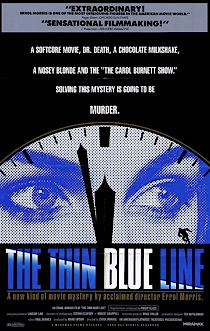 15. The Thin Blue Line
15. The Thin Blue LineYear: 1988
Director: Errol Morris
Errol Morris’ first mature feature is perhaps the most famous case of a documentary having a life outside the silver screen. The Thin Blue Line focuses on the case of Randall Adams, who allegedly murdered a police officer. Combining his nearly obsessive concern for the truth with his experience as a private detective, Morris unearthed a plethora of misconceptions and flat-out lies that made it clear Adams was being framed. Publicity surrounding the film resulted in his case being re-opened, exonerating Adams.—Sean Gandert
 14. Reservoir Dogs
14. Reservoir DogsYear: 1992
Director: Quentin Tarantino
Reservoir Dogs’ debut at the 1992 Sundance Film Festival launched not only the career of one Quentin Tarantino but an American indie genre unto itself characterized by extreme violence, profane dialogue, nonlinear storytelling and a curated soundtrack. Many have tried, but none of his imitators has achieved the visual and aural poetry at work in Tarantino’s oeuvre, particularly his magnum opus Pulp Fiction, upon whose release in 1994 newly minted fans went back to discover the aftermath of Mr. Blonde, Mr. Blue, Mr. Brown, Mr. Orange, Mr. Pink and Mr. White’s botched diamond heist (but not the heist itself). This is where it all began.—Annlee Ellingson
 13. The Graduate
13. The GraduateYear: 1967
Director: Mike Nichols
In the undisputed king of movies for those headed out into the real world, a hyper-accomplished recent grad (Dustin Hoffman) panics at the prospect of his future and falls into an affair with the much older wife of his father’s business partner (Anne Bancroft). It helped define a generation long since embalmed by history, but the sense of longing for an alternative hasn’t aged.—Jeffrey Bloomer
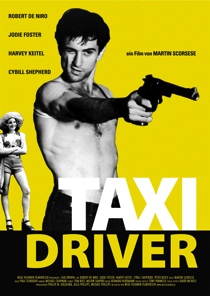 12. Taxi Driver
12. Taxi DriverYear: 1976
Director: Martin Scorsese
Taxi Driver was Scorsese’s breakthrough: a seething condemnation of alienation—not to mention New York’s descent in the 1970s into a crime-ridden hellscape—delivered with such clinical coldness that when Scorsese’s star (and longtime collaborator) Robert De Niro finally explodes, it’s unspeakably upsetting. If Taxi Driver now feels slightly overrated, it’s only because the movie’s DNA has crept into so many subsequent filmmakers’ efforts. Scorsese grew up loving Westerns, and Taxi Driver could be his version ofThe Searchers—except his man-out-of-time finds no redemption.—Tim Grierson
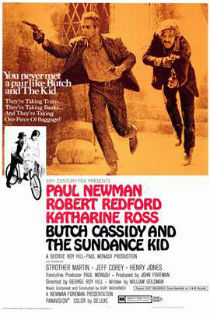 11. Butch Cassidy and the Sundance Kid
11. Butch Cassidy and the Sundance KidYear: 1969
Director: George Roy Hill
Paired with Robert Redford, Paul Newman tore into his part as the folk outlaw Butch Cassidy and created an instant touchstone of the genre. That Newman lent his star to a film with criminal heroes was a revolutionary act for an actor of his stature at the time, and for that it’ll likely remain his best-remembered role.—Jeffrey Bloomer
 10. Dr. Strangelove
10. Dr. StrangeloveYear: 1964
Director: Stanley Kubrick
While attempting to adapt Peter George’s novelRed Alert for the big screen, director Stanley Kubrick found that he kept needing to cut out certain real-life details about the emergency nuclear bomb procedures because they were simply too absurd to work in a serious drama. Deciding to rewrite the project as a dark comedy, he recruited renowned satirist Terry Southern to help pen the script. From there, it’s all history. To this day, Peter Sellers’ three very different (and very funny) performances remain a feat by which few actors have matched. Moreover, the image of Slim Pickens riding the bomb to its destination as well as the final montage of destruction set to the wistful “We’ll Meet Again” are the stuff of movie legend. Worldwide Armageddon has never been so hilarious.—Mark Rozeman
 9. The Apostle
9. The ApostleYear: 1997
Director: Robert Duvall
Insightful and real portraits of men of faith seem to elude filmmakers—it seems every preacher, especially, that appears on the silver screen is either a saint or a demon. There’s a whole lot of both—and then some—in Duvall’s Sonny Dewey. He’s simultaneously vain and humble, patient and hot-tempered, chaste and decadent. He’s a jumble of mixed motivations, as are we all. And he knows it. No wonder Robert Duvall refused to let anyone else take control of his beautiful script, and waited until he had the means to produce the film himself, with complete creative control. Only a man with so much passion for this project could have kept it safe from harm and brought such a masterpiece to the screen.—Michael Dunaway
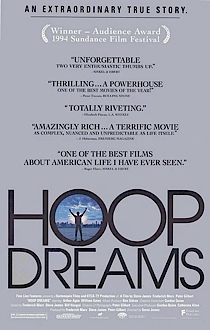 8. Hoop Dreams
8. Hoop DreamsYear: 1994
Director: Steve James
Seldom has a film, narrative or documentary, so probingly explored the American Dream. In this case, the version of the dream that young William Gates and Arthur Agee have bought into is redemption (and fortune and fame) through athletic achievement. That the odds are stacked so heavily against those dreams ever coming true only makes their dearest hopes that much more poignant. Steve James famously spent nearly eight years making the film, and despite its nearly three-hour running time, it doesn’t feel long at all. Every frame feels essential.—Michael Dunaway
 7. Pulp Fiction
7. Pulp FictionYear: 1994
Director: Quentin Tarantino
Still Quentin Tarantino’s greatest accomplishment,Pulp Fiction rehashes a handful of other great gangster movies to form a modern masterpiece. In a full-circle plot of crossings and complications, the smart elick of a movie takes us on an ultra-violent and ultra-funny ride with John Travolta at his best and Samuel L. Jackson dropping F-bombs like no one else.—David Roark
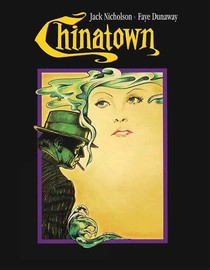 6. Chinatown
6. ChinatownYear: 1974
Director: Roman Polanski
With one of the greatest opening scenes in cinema, Polanski’s look at 1930s Los Angeles provides yet another opportunity for Jack Nicholson to shine and for noir to captivate an audience with an iconic private eye (Nicholson’s J.J. Gittes) and femme fetale (Faye Dunaway).—Josh Jackson
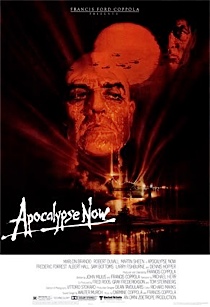 5. Apocalypse Now
5. Apocalypse NowYear: 1979
Director: Francis Ford Coppola
Francis Ford Coppola’s best film without the word “Godfather” in it was the result of two years in the jungle, which led to performances that captured mental breakdown in a way that felt all too real. The update to Joseph Conrad’s Heart of Darknesswas a different kind of war movie, one which captured the horror of war and the madness of Vietnam like no other before or since. See the original film or the 2001 edit with additional footage, Apocalypse Now Redux, both available on Netflix Instant.—Josh Jackson
 4. Manhattan
4. ManhattanYear: 1979
Director: Woody Allen
Gorgeously shot in black-and-white and set against a backdrop of Gershwin’s “Rhapsody in Blue,” Allen’s ode to the city that never sleeps is a profound meditation on love and loss. Allen, Diane Keaton and Michael Murphy play jaded, self-absorbed adults who over-think and over-analyze every aspect of life. Mariel Hemingway beautifully plays Tracy, the young girl in love with Allen and the only character who is honest about her feelings, the only one with the capacity to love whole-heartedly. The other characters are too delicate, too bruised, and too cynical. When Tracy tells him “you have to have a little faith in people” in the film’s touching final scene, our hearts melt a little—love may be fragile and fleeting, but it’s worth the risk every time. Romantic, witty and bittersweet, Manhattan is impeccably crafted, and stands tallest among Allen’s multitude of towering achievements.—Jeremy Medina
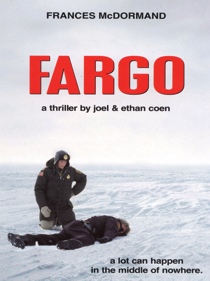 3. Fargo
3. FargoYear: 1996
Directors: Ethan Coen, Joel Coen
In exploring the unsavory implications of “Minnesota nice,” the Coen Brothers created one of the most beloved, acclaimed and quotable films of all time. “Fargo” explores the tension that accompanies polite social norms and the quiet desperations they often mask, and many scenes are awkward enough to make your skin crawl. The emotional restraint displayed by Jerry Lundegaard and Mike is a thin and disingenuous veil over yearnings for money or companionship. The foil to this, obviously, is Marge Gunderson, who just really is that nice and hardworking and downright normal. Because of her and her husband’s gentleness, the movie makes you appreciate the art behind postage stamps as much as it makes you cringe at the sound of a wood chipper.—Allie Conti
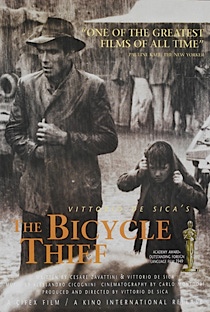 2. The Bicycle Thief (Ladri di biciclette)
2. The Bicycle Thief (Ladri di biciclette)Year: 1948
Director: Vittorio De Sica
This tale of a father and son in poverty-stricken Italy is on of the most moving films I’ve ever seen. Part of the neo-realism movement, it was shot on the streets of Rome and was quickly recognized as a masterpiece by film critics around the world. There’s simply no better way to spend 89 minutes in front of screen.—Josh Jackson
 1. Raging Bull
1. Raging BullYear: 1980
Director: Martin Scorsese
The best film of the 1980s contains one of the all-time-great feats of directing and one of the all-time-great feats of screen acting. The status that Martin Scorsese’s Raging Bull has achieved in the years since its release is completely earned. Watching it is a fully felt experience. Over the years, much has been made of the weight Robert De Niro gained while filming Raging Bull to authentically capture the physical transformation of boxer Jake LaMotta. While it’s a great symbol of his commitment, the pounds don’t begin to explain the depths of the character portrait he and Martin Scorsese created. The film looks unforgivingly at a fragile, insecure man who communicates his need for love with jealousy, anger and violence. Scorsese’s shots convey the overly suspicious workings of LaMotta’s head, then back out to coldly observe the horrific violence that ensues. Then there are the boxing scenes. Scorsese deserves endless praise for finding such lively, inventive ways to capture the experience inside the ring. But what’s really amazing is that he goes beyond a great sports scene. Each fight serves as a window into LaMotta’s soul. The camera movement, the quick edits, the sudden shifts in speed all reflect his mental state, his need to damage himself or cause damage to others. Such expressive, visceral filmmaking has rarely been equaled.—Michael Burgin
“The Fifth Element” is one of the best sci fi movies on netflix. At the time of its release it was the most expensive European film ever made but it was also very successful.
ReplyDelete